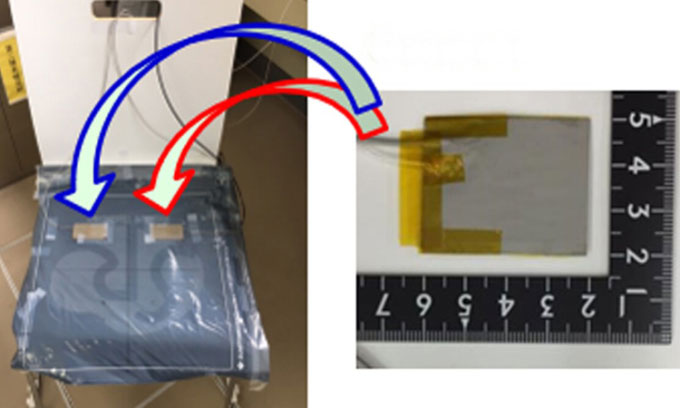Scientists Develop Sensor System Mounted on Car Seats to Detect Driver’s Leaning, Heart Rate, or Breathing Changes.
There are already some systems in the world that use cameras mounted in vehicles to detect drunk drivers. However, a research team at the National Institute of Advanced Industrial Science and Technology in Japan believes these systems are not always reliable, as reported by New Atlas on December 8. Their alternative solution is a sensor system integrated into car seats.

Testing the sensor system mounted on seats in the laboratory. (Photo: ACS Applied Electronic Materials)
Drunk Driving Detection Systems that rely on cameras typically operate in two ways. First, external cameras are used to detect unusual vehicle movements, such as swerving between lanes or making sudden changes in direction. Second, internal cameras monitor the driver’s face for signs like closed eyes or a drooping head.
According to the research team, both systems have their limitations. External cameras can be obscured by mud or debris, while internal cameras perform poorly in low light conditions. Therefore, they developed a pressure sensor system mounted on the seat to more effectively monitor the driver’s body movements.
The system includes a sensor in the backrest that can detect the heart rate and breathing rate of volunteers during testing. These factors change characteristically when a driver becomes drowsy. Two additional sensors placed in the seat help recognize when a volunteer leans left or right multiple times, movements that may indicate the driver is dozing off.
The sensors are made from piezoelectric materials, which generate electricity when subjected to mechanical pressure. Such materials typically cannot withstand high temperatures, while electrical devices used in cars require this capability.
The team of experts addressed this issue by sandwiching a coaxial cable that detects electrical current within a specially folded piezoelectric material. This material consists of a polyimide plastic substrate with a zinc oxide film on one side and silver glue coated on both sides. As a result, they achieved a sensor that can withstand temperatures up to 121 degrees Celsius.
This new research has been published in the journal ACS Applied Electronic Materials. Scientists are planning to install the sensor system in real car seats and conduct road tests.


















































